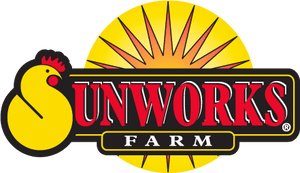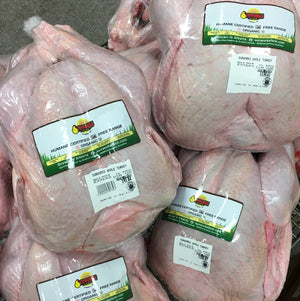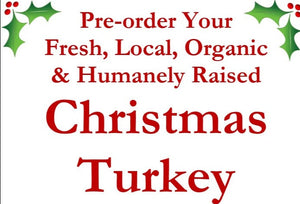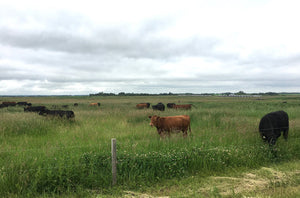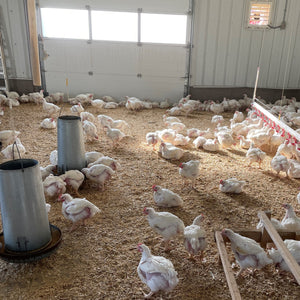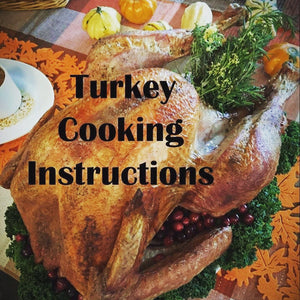Growing Soil

 One of our main occupations that we do on Sunworks Farm is build soil and animals are an integral component of how we grow soil.
One of our main occupations that we do on Sunworks Farm is build soil and animals are an integral component of how we grow soil.
When we look at the history of soil in western Canada we can understand how animals and especially the buffalo helped create our bountiful land and topsoil. The buffalo were a herding animal that grazed all across western Canada but the tall grass prairie that surrounded Edmonton and the Battle River was one of the richest areas of grazing for the buffalo herd. The buffalo would graze in a tight knit group of a couple hundred to many thousand animals. When they grazed in the tight herd all the grass behind the animals would be totally trampled down and the urine and manure would totally cover the ground. The grass could have been 3ft to 6ft high when the buffalo first arrived and when they finished grazing all the grass that wasn’t eaten would be trampled down and a thick layer of trampled grass would add to the organic matter of the soil. The buffalo would only spend a couple of hours in one spot as they were constantly moving and grazing. Sometimes if the herd was being harassed by wolves or bears the herd would go rumbling across the prairie chewing up the land with their hooves and leaving nothing untouched. As the summer thunderstorms came rolling across the country side, with lightning and rain, the earth would come alive again with all the manure and organic matter as fertilizer. With so much organic matter in the soil it acted like a big sponge and all of the rain that fell wouldn’t run off but would be soaked up. The grass would grow so fast that you could almost see it grow and the buffalo would come back in a couple weeks or months and graze again and the cycle would start all over. The grass that the buffalo never ate in the summer would go into the winter 4 to 6 ft high and trap snow all winter. In the spring fires would sometimes come. The wind on the spring days could be a 80 to 100 km per hour and the fire would burn at a massive speed across the tops of the oxidized tall grass. As the grass burnt in milliseconds it turned into carbon and settled down onto the ground to provide carbon as fertilizer. The fire blew through the willow thickets around the sloughs and in the poplar thickets and burnt all the leaves off of the willows and poplars so the prairie grasslands were kept intact. The fire created its own wind and blew through at such a high speed that the topsoil never was burnt and the fire never got down into the thick organic matter that had been built up for centuries. Year after year the organic matter from the plants decayed into topsoil and this is how we have such fine soils in many parts of western Canada.
 We do our best to mimic this historic natural soil making cycle. Our cattle are time controlled grazed in the summer time, this means we give our cattle small areas of grass so all of the grass is either eaten or trampled down. We move our animals onto a fresh piece of land every day to prevent the land from becoming overgrazed and barren. We spread chicken compost from our winter broilers on the land about every 2 to 3 years to add to the fertility. We have pictures of the grasses growing to over 7 ft tall. If we don’t get all of our land grazed completely in the fall this grass is left to collect snow so our ponds and dugouts are always full. The land has so much organic matter that our soil now acts like sponge and pulls all of the moisture down into the earth. When we have finished grazing the land becomes alive again with a tremendous regrowth of grass.
We do our best to mimic this historic natural soil making cycle. Our cattle are time controlled grazed in the summer time, this means we give our cattle small areas of grass so all of the grass is either eaten or trampled down. We move our animals onto a fresh piece of land every day to prevent the land from becoming overgrazed and barren. We spread chicken compost from our winter broilers on the land about every 2 to 3 years to add to the fertility. We have pictures of the grasses growing to over 7 ft tall. If we don’t get all of our land grazed completely in the fall this grass is left to collect snow so our ponds and dugouts are always full. The land has so much organic matter that our soil now acts like sponge and pulls all of the moisture down into the earth. When we have finished grazing the land becomes alive again with a tremendous regrowth of grass.
Our chickens are raised in shelters with no floors in the summer and are moved every day, leaving only a skiff of manure across the land. Again this fertility kicks the grass growth into high gear so we have more grass for our cattle. The manure has a tremendous amount of minerals and bacteria to contribute to the billions of microorganisms that live in a healthy soil.
 It has been 25 years since the soil on the farm was last tilled and we have seen tremendous growth in our soil over the years. The land that we bought in 1992 was poor quality land, with minimal topsoil over the clay. When it rained the fields used to be full of puddles as the rain had nowhere to go except sit on top of the clay. We now have soil that has a deep layer of black earth with layers of organic matter. We no longer have bare spots of clay showing throughout the fields, but instead we have beautiful soil that is full of bugs and worms and the grass is so thick that it is hard to walk through during the summer. Even with all the rain that we are receiving this spring we have no puddles in the pasture as the organic matter soaks up every drop.
It has been 25 years since the soil on the farm was last tilled and we have seen tremendous growth in our soil over the years. The land that we bought in 1992 was poor quality land, with minimal topsoil over the clay. When it rained the fields used to be full of puddles as the rain had nowhere to go except sit on top of the clay. We now have soil that has a deep layer of black earth with layers of organic matter. We no longer have bare spots of clay showing throughout the fields, but instead we have beautiful soil that is full of bugs and worms and the grass is so thick that it is hard to walk through during the summer. Even with all the rain that we are receiving this spring we have no puddles in the pasture as the organic matter soaks up every drop.
We really believe in making our land better for the future generations because we don’t inherit the land from our ancestors we borrow it from our grandchildren. Being able to care for a piece of land and make it better than when you received it is the most gratifying experience that we can have as a family and being able to leave an ecosystem that can contribute to the well-being of the earth adds a tremendous amount of joy.
By working with nature and not against it we can give you the healthiest, cleanest food in the world.
Thanks
Your Farmer
Ron
- Sunworks Farm
